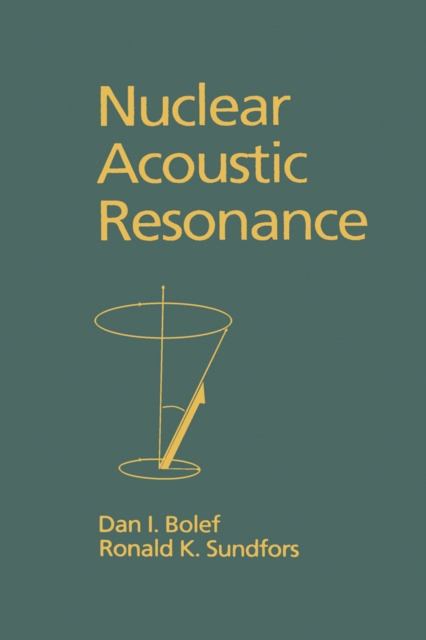
Nuclear Acoustic Resonance PDF
by Dan Bolef
Description
Nuclear Acoustic Resonance serves as an introduction to the field of nuclear acoustic resonance and highlights its differences from nuclear magnetic resonance.
Topics covered range from the nature of the coupling mechanisms, including dynamic electric quadrupole coupling and dynamic Alpher-Rubin coupling, to experimental techniques.
The application of nuclear acoustic resonance to the study of conducting media is given consideration. This book consists of 10 chapters and begins with a description of nuclear acoustic resonance, nuclear magnetic resonance, and combination acoustic-electromagnetic spin resonance.
A detailed treatment of nuclear electrostatic multipole interactions is presented, with emphasis on the irreducible tensor operators and their application to the calculation of nuclear acoustic resonance absorption and dispersion, as well as of line width and relaxation effects.
An alternative approach that builds on the concepts of acoustic impedance and susceptibility for calculating absorption and dispersion in nuclear acoustic resonance is also presented.
In an extension of the usual treatment of nuclear dipolar and nuclear quadrupolar interactions, the reader is introduced to appropriate expressions for nuclear acoustic coupling in solids via the dynamic hexadecapole moment.
The final chapter explores the use of the Superconducting Quantum Interference Device (SQUID) in the detection of nuclear acoustic resonance. This book will be helpful to students and practitioners of physics and those interested in nuclear acoustic resonance.
Information
-
Download - Immediately Available
- Format:PDF
- Pages:444 pages
- Publisher:Elsevier Science
- Publication Date:02/12/2012
- Category:
- ISBN:9780323140829
Information
-
Download - Immediately Available
- Format:PDF
- Pages:444 pages
- Publisher:Elsevier Science
- Publication Date:02/12/2012
- Category:
- ISBN:9780323140829






